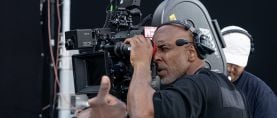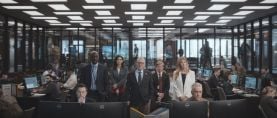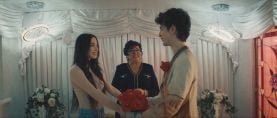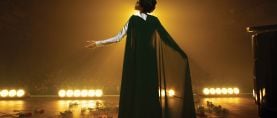
ASC Close-Up: Gregg Heschong
“The opportunity to share knowledge with students and working professionals, to teach and be taught, has made the ASC something of a second home for me.”
When you were a child, what film made the strongest impression on you?
David Lean’s The Bridge on the River Kwai, photographed by Jack Hildyard, BSC.
Which cinematographers, past or present, do you most admire?
Gregg Toland, ASC; James Wong Howe, ASC; Arthur Edeson, ASC; Sven Nykvist, ASC; and Haskell Wexler, ASC, in addition to many of my contemporaries.
What sparked your interest in photography?
Photography became a natural extension of my interest in painting and drawing as a child and teen. One of the fondest gifts I received as a child was a Kodak Brownie camera. I soon began experimenting with 35mm still photography — and at age 12, I purchased an 8mm camera.
Where did you train and/or study?
I helped my father build a darkroom and I experimented with black-and-white photography, and with whatever camera was available. My training was primarily learning by doing, though the UCLA film department certainly helped propel me into the professional world.
Who were your early teachers or mentors?
My junior-high English teacher, Wilbur Hanson. We had many talks about literature, music, art and history. As a teenager, I was mentored by director Lawrence Carra, a professor at Carnegie Mellon’s drama department. In Los Angeles, I was both employed and encouraged by artists such as Ralph Bakshi; Robert Abel; Sven Nykvist, ASC; Joel Schumacher; Bruce Logan, ASC; and Dean Cundey, ASC. And I’d be remiss if I didn’t acknowledge the support I received as a newly minted DP from James Burrows, Andy Ackerman and Bob Boyett — and most importantly, writer and producer Kari Lizer.
What are some of your key artistic influences?
Painters — from the Dutch masters to the Impressionists, along with Hopper, Andrew Wyeth, Georgia O’Keeffe, Klimt and even Frederic Remington. The photography of Adams, Weston, Cartier-Bresson, Dorothea Lange and W. Eugene Smith.
How did you get your first break in the business?
If I were to pick one, it would be when Joel Schumacher called to ask if I would step in as cinematographer to finish his film D.C. Cab. With that I was rerated from operator to director of photography.
What has been your most satisfying moment on a project?
I can be grateful that there have been many. I certainly would count the experience of shooting 2nd unit on Who Framed Roger Rabbit? and photographing my first multi-camera, The Tracey Ullman Show. Not only was every day a challenge but a world of fun as well.
Have you made any memorable blunders?
As a very inexperienced operator, I had the opportunity to take over the A camera on the television series Trapper John, M.D. I met Fred Gately, ASC the day I started work. One of my first setups was a very complicated crane move, which required rotating the turret in sync with the Panahead. I became so involved with framing that I did not realize my left foot was slowly locking the turret, ruining the final composition. They printed the take. Fred was a true gentleman at dailies and I lived to see another day.
What is the best professional advice you’ve ever received?
Probably the most succinct advice I ever received was when I was first-time directing an episode of NewsRadio. James Burrows was kind enough to sit in on my producer run-through notes session. Afterwards he said, ‘Heschong, you have to make some noise!’ Another way to say, ‘Believe in yourself and speak up.’
What recent books, films or artworks have inspired you?
Once Upon a Time ... in Hollywood, Little Women, 1917 and Joker. I reread Five Came Back and felt the need to return to another inspiring book, You Can’t Go Home Again by Thomas Wolfe. The recent Taper Forum production of Samuel Beckett’s Happy Days was completely immersive. Attending the L.A. Phil’s recent Copland performances has been very rewarding.
Do you have any favorite genres or genres you would like to try?
To this day I would love to shoot a Western. That and a true film noir — perhaps even in black-and-white!
If you weren’t a cinematographer, what might you be doing instead?
I’d be a singer — if I had a real range. Though when I’m in the mood, I am more than happy to embarrass myself.
Which ASC cinematographers recommended you for membership?
James L. Carter, Dave Perkal and George Spiro Dibie.
How has ASC membership impacted your life and career?
The opportunity to share knowledge with students and working professionals, to teach and be taught, has made the ASC something of a second home for me.






